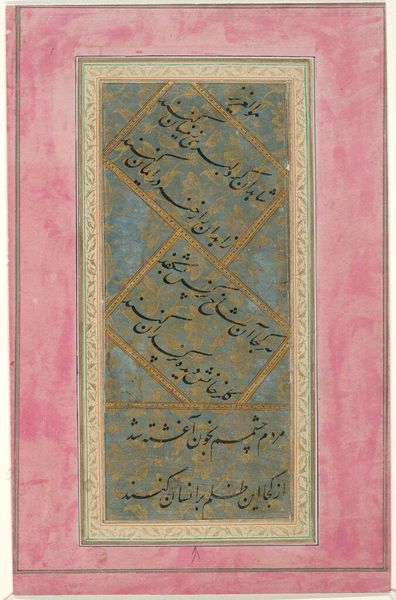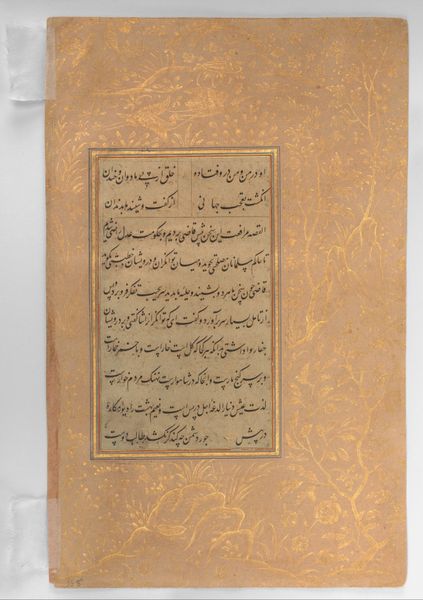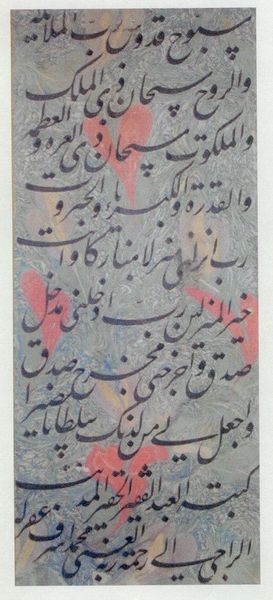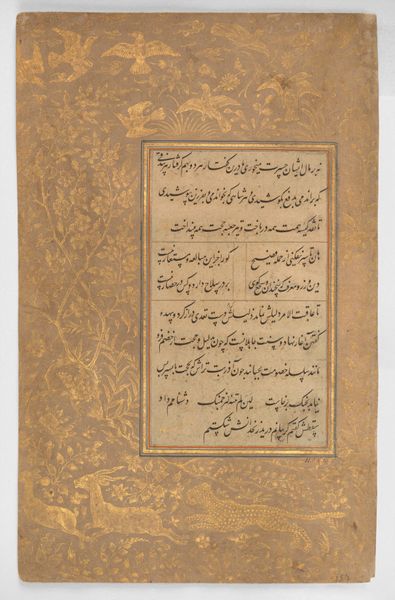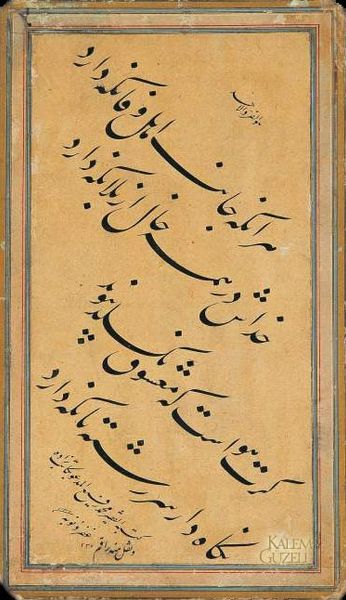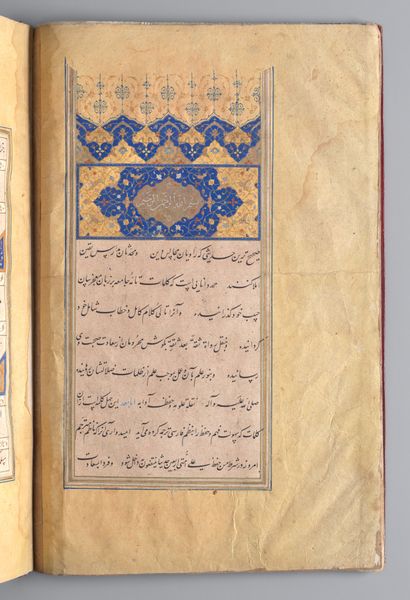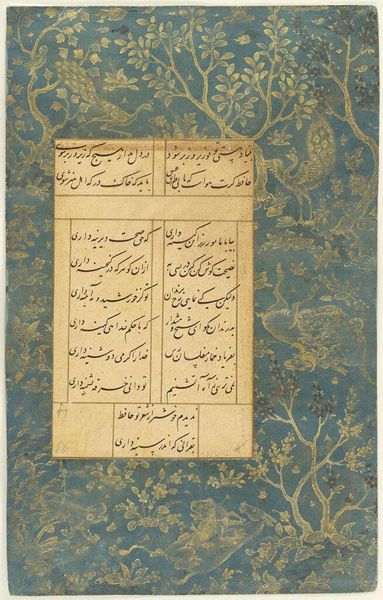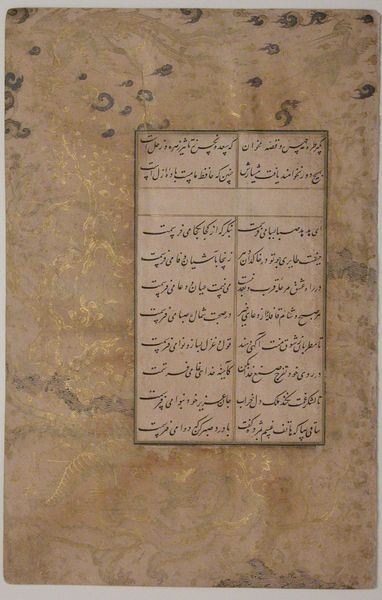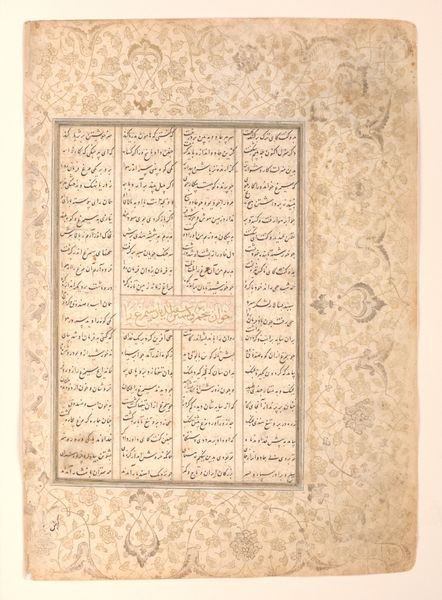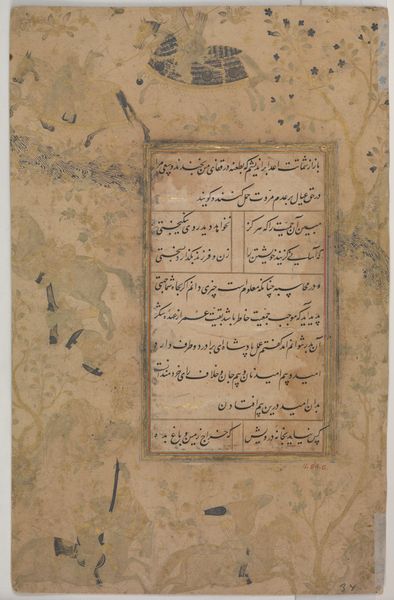
Double Album Leaf with Calligraphic Exercise by Fath 'Ali Shah 1800 - 1850
0:00
0:00
drawing, ink
#
drawing
#
ink
#
geometric
#
islamic-art
#
miniature
#
calligraphy
Dimensions: H. 15 5/8 in. (39.6 cm) W. 12 3/8 in. (31.5 cm)
Copyright: Public Domain
Curator: Editor: We're looking at a "Double Album Leaf with Calligraphic Exercise" by Fath 'Ali Shah, made sometime between 1800 and 1850. It's an ink drawing. There's an interesting geometric layout that also incorporates elements of Islamic art and miniature style. I'm struck by the beauty of the writing; it almost feels musical. How do you interpret this work? Curator: I see a potent visual representation of power and cultural identity. Calligraphy in this period, particularly under rulers like Fath 'Ali Shah, wasn't merely decorative. It was a crucial tool for consolidating and projecting authority. The very act of creating such intricate work, embedding geometric precision, subtly reinforced the ruler’s dominance and control. Editor: That's fascinating! I hadn't thought about the power dynamics involved. The repetition of the script – does that add to the message somehow? Curator: Absolutely. Repetition, within the geometric structure, evokes both ritual and tradition. It signals adherence to established norms, while simultaneously showcasing the individual Shah's refinement. But who exactly are these norms designed to include or exclude? Consider, for example, how literacy was restricted; it transformed a work like this into something enjoyed by an elite group and acted as a demonstration of knowledge, status and power. Editor: So, it’s about communicating power through exclusive knowledge? The calligraphy becomes a kind of political statement. Curator: Precisely. This "calligraphic exercise" can be seen as an exercise in projecting authority through artistic expression. This work challenges us to decode the socio-political context embedded within its very lines and design. How has examining the interplay of tradition and power in this piece changed your understanding of Islamic art? Editor: I realize I was focusing too much on aesthetics and not enough on the broader social context. Now I see this isn’t just beautiful writing. It's history inscribed in ink. Curator: Exactly! And art, in its most powerful form, reflects both history and humanity.
Comments
No comments
Be the first to comment and join the conversation on the ultimate creative platform.

